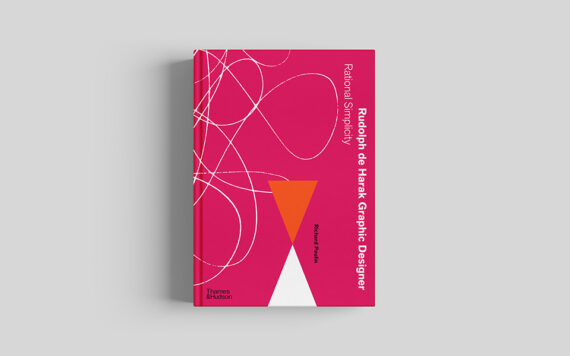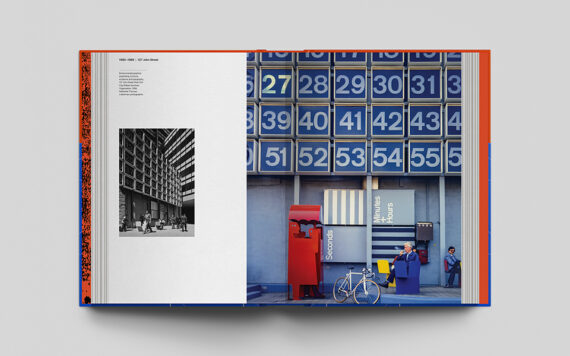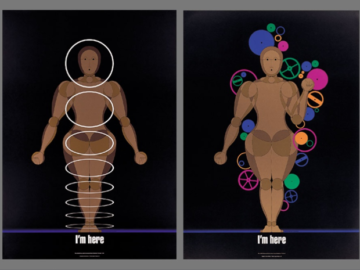Creativity is often the driving force behind groundbreaking works that leave a lasting impact beyond the design world. Award-winning designer and Graphis Master Richard Poulin, known for his versatile approach to design, takes us on a journey through the creative process for the book on one of the most influential graphic designers of the twentieth century, titled “Rational Simplicity: Rudolph de Harak, Graphic Designer” for Thames & Hudson Ltd. This gold-winning endeavor sheds light on de Harak’s innovative work, from his early days in Los Angeles to his role as a design consultant and educator in New York City, ultimately revealing the enduring impact of his unique point of view on the world of design.
By: Richard Poulin






Rudolph de Harak (1924–2002) is one of the most influential graphic designers of the twentieth century. Inspired by early modernist masters, such as Will Burtin, György Kepes, Alvin Lustig, and Max Bill, as well as by the rigor, simplicity, and rationalism of European Modernism and the International Typographic Style, de Harak developed and refined his timeless and pioneering work from his early years in Los Angeles to his success as a design consultant and educator in New York City. He possessed a definitive and unique point of view, which he stayed true throughout his entire career.
Throughout his illustrious career, he continuously explored the potential of abstraction, geometry, and color, as well as experimenting with photography and various photographic techniques in new and exciting ways. De Harak brought his pioneering inventiveness to everything he created, from album covers, book jackets, and branding to furniture, exhibitions, and museums.
Organized chronologically, Rudolph de Harak Graphic Designer: Rational Simplicity is the first publication to document de Harak’s pioneering and prolific work for a wide range of clients, including the Metropolitan Museum of Art, Columbia Records, Esquire magazine, McGraw-Hill Publishing, and the Cummins Engine Company, among many others. With over 500 illustrations, including reproductions of de Harak’s seldom-seen paintings and collages, and remembrances from friends, colleagues, former students, artists, and family members, this comprehensive monograph provides an in-depth and definitive account of the influential designer’s life and work.
I always felt Rudolph de Harak was one of the unsung pioneers of Modernist graphic design. He possessed a definitive and unique point of view, which he stayed true to throughout his entire career, yet he and his body of work have never been celebrated nor explored in depth. He was a rare individual—a thinker, a challenger, an advocate for new ideas, and an inspiring colleague. He believed that all great ideas, and all significant works of art and architecture, came from dreamers, visionaries, and communicators. De Harak was an anomaly among his peers in the graphic design profession, yet no one equals his diversity nor his accomplishments across the various design disciplines. Early on in his career he fully embraced the tenets and philosophy of European Modernism with great intensity and enthusiasm believing that effective design meant cutting away all of the unnecessary appendages, leaving only those elements that stated facts, thoughts, and ideas.
De Harak believed that a Modernist’s foundation and philosophy provided creative freedom to practice and move from one design discipline to another. He brought this vision and inventiveness to everything he created, from album covers and book jackets to furniture and museums. Whether designing a poster, an exhibition, or a house, his creative process and approach were always the same—it was a shared process and approach. This was clearly evident in the branded environments he designed throughout his career—from his groundbreaking work on 127 John Street in the Financial District of Lower Manhattan and his extensive, multidisciplinary work for the Metropolitan Museum of Art to his masterpiece of corporate culture and storytelling for the Cummins Engine Headquarters in Columbus, Indiana.
Rudy was passionate about the visual world and his place within it. Always encountering new ideas to explore and new things to discover, his interest in life and his surroundings, large and small, always kept him vibrant and energized. He breathed new life into the world of graphic design, stripping away unnecessary ornament and excess and leaving only what was deemed essential. He firmly believed that being simpler didn’t necessarily mean the end result would be less profound. His work was thoughtful, systematic, and timeless.
He was a rare individual—a thinker, a challenger, an advocate for new ideas, and an inspiring colleague. He believed that all great ideas, and all significant works of art and architecture came from dreamers, visionaries, and communicators.
Whatever his chosen creative endeavor at any particular stage of life, as his wife Carol explained, “he went into it with an intense amount of effort, energy, and enthusiasm. If he didn’t know specific aspects of any process, he would teach himself and learn along the way. That’s the way he was with everything that he became involved with. Rudy possessed this inner strength that allowed him to keep on learning, absorbing, and observing and not giving up on anything nor on the dreams and aspirations that he had.”
While I was very familiar with most of his professional work, I had not seen the majority of his paintings and collages (which are included in the last chapter of the book), which he created following his retirement and relocation to the coast of Maine.
During the last ten years of his life, Rudy not only painted practically every day, but also found the time to teach himself piano and clarinet (he had a lifelong love and passion for music and was a seasoned jazz saxophonist), make custom fishing rods and lures (he was also a highly skilled surf fisherman), and design and fabricate his own wood furniture.
Rudolph de Harak believed that all great ideas, and all significant works of art and architecture came from dreamers, visionaries, and communicators. When he talked of this belief he always quoted the great Modernist American architect Louis Sullivan: ‘Nor am I of those who despise dreamers. For the world would be at a level of zero were it not for its dreamers – gone and of today. He who dreams not creates not.”
This was, and is, his legacy.
Richard Poulin is a designer, educator, author, and artist living in Southern California. Throughout his career he has focused on a generalist approach to all aspects of design, including graphic, experiential, interior, and exhibition design, dividing his time between professional practice and academia.
For over thirty years, he was creative director and managing partner of Poulin + Morris Inc., which he co-founded in New York City in 1989. As a highly-respected educator, he taught at Cooper Union and the School of Visual Arts for over two decades. He is a recipient of a research grant in design history from the Graham Foundation for Advanced Studies in the Fine Arts; a recipient of a Fellow from the Society of Experiential Graphic Design (SEGD), the profession’s highest honor; and his work is in the permanent design collections of the Denver Museum of Art, Letterform Archive, Library of Congress, and the Los Angeles County Museum of Art (LACMA).
Richard is also the author of several books on graphic design, typography, and design history which have been translated into eight languages and used by students and practitioners worldwide. His new book, a comprehensive monograph on the life and work of mid-century modernist designer Rudolph de Harak—Rational Simplicity: Rudolph de Harak: Graphic Designer—was released in 2022 by Thames & Hudson (London). As an artist, his multi-media collage constructions have been exhibited throughout
the United States and are in the collections of several private collectors.
Richard lives in Palm Springs, California.
Social: Instagram, Facebook, LinkedIn






